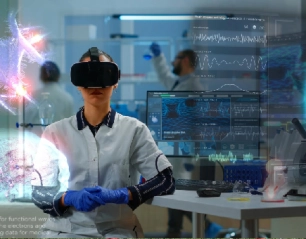Today with the increasing number of data breaches and cyber threats practice has become an order of the day for organizations. Conventional concepts of classic perimeter protection that exist outside the network offer limited protection against various advanced Internet threats. Meet Zero Trust Architecture (ZTA) – a new paradigm in information security in which no user or network node can be considered trusted from the start. Indeed ZTA is the next big thing in cyber defense as attackers become more sophisticated in their approaches to penetrating targets.
By Understanding Zero Trust Architecture
As described by Forrester Research in 2010, the Zero Trust notion contradicts the “trust but verify” security models. However, the working principle of ZTA stands as “never trust, always verify.” Implementing this philosophy means that all users, devices and applications must be positively identified and then constantly watched regardless of their position within the network.
The core idea is simple yet powerful: it becomes safe to presume that every connection is a potential threat. About the access that can be gained, whether from within the corporate office or a remote location, Zero Trust replaces trust-inferred access with real-time risk assessments.
Why Zero Trust Assessment Is Compelling Today
Employees continue to connect to corporate networks from home or while on the road, while cloud service providers interact with corporate networks over the internet and IoT devices have compromised the former key physical separation between the corporate network and the outside world. The scenarios of traditional security models, developed for more or less immobile landscapes, are insufficient to protect these active environments. Here are the key factors driving the adoption of Zero Trust:
- Sophisticated Cyber Threats: Projects today use sophisticated methods such as phishing, ransomware, and lateral movement to cause damage to the network. A single attacker with a verified account can cause an organization’s security to crumble.
- Workforce Mobility: Remote work fueled by covid19 pandemic around the world has substantially increased the areas of exposure to threats that traditional security models of perimeter security does not address. People participate in business processes from different places and platforms, applying higher differentiation in protection.
- Cloud Adoption: Given that the data and applications are being stored in the cloud and applications themselves, organizations require a security model that addresses the protection of assets beyond just physical infrastructure.
- Regulatory Compliance: All that concerns personal data is marked by strict rules, such as GDPR and CCPA, which imply strict measures for the protection of information. Zero Trust runs contrary to these requirements because it provides strict access control as well as visibility.
Principles of Zero Trust Foundation
Zero Trust is an architecture that is based on multiple technologies, policies, and processes. The following pillars form the foundation of ZTA:
Identity and Access Management (IAM)
Zero Trust starts right from controlling access where no user or device is trusted until proven otherwise. IAM solutions call for MFA, manage RBAC, and deploy SSO to reduce possible risks.
Least Privilege Access
Only what the users need to do their jobs is given to them in the least amount possible. This principle reduces the danger that an invaded account can impose, which restricts movement to other regions within the network.
Network Segmentation
Since the links between the networks are severed, Zero Trust minimizes the ability of unauthorized access to specific resources. Micro-segmentation builds on this by providing specific security policies for micro workloads or application-type workloads.
Continuous Monitoring and Analytics
The principal foundation of Zero Trust is real-time monitoring of users, devices and traffic. Real-time monitoring with the help of analytics and AI identifies threats and calls for prompt action.
Encryption
Both, data in motion and data at rest are secured, which helps shield information from prying eyes, even of the malicious kind that would have intercepted it.
Endpoint Security
The state of security policies is constantly evaluated, and conformity with the norms is examined regarding all devices. That is only devices that have been qualified to conform to the aforementioned standards are allowed to access limited corporate resources.
Zero Trust Network Access-monitoring (ZTNA)
ZTNA is more efficient than the conventional VPN because it grants restricted access to applications through access policies. Unlike VPNs, ZTNA guarantees that a user can only request and obtain access to some resources they are allowed to.
Implementing Zero Trust: Challenges and Solutions
Although applying Zero Trust delivers strong security advantages, the concept is not without its implementation difficulties. While the adoption of ZTA has its benefits, migrating from initial structures toward ZTA takes time, money, and the right internal culture.
Complexity of Implementation
Security says that Zero Trust is not a single program but a combination of a variety of programs that will need to be integrated throughout the tools and systems. The use of multiple technologies is always a challenge to any organization, especially as they struggle to implement a centralized framework.
- Solution: First there must be a phased approach to the risk areas most exposed. Select solutions that are easily scalable to avoid having to put in place new solutions that do not fit into the existing structures and hence cause disruption.
Resistance to Change
A common concern with Zero Trust is that employees will complain that it hampers their work and will thus actively resist the initiative.
- Solution: Teach people in an organization about the Zero Trust principle and how it guards organizational and personal data. Therefore security and usability have to be finalised between themselves so that they do not hinder adoption.
Budget Constraints
The integration of Zero Trust is expensive, particularly for small and medium companies and firms.
- Solution: The available Zero Trust solutions are scalable cloud-based systems that provide affordability. Most of them provide clients with compartmentalized solutions based on the requirements of their organization.
Skill Shortages
There is a general lack of internal resources to develop and support zero-trust architectures in an organization.
- Solution: Outsource with managed security service providers (MSSPs) or promote other training to their IT workforce.
Zero Trust Uses & Implementations In Everyday Life
The following are the uses of zero trust in real-world applications:
- Healthcare: The healthcare industry to implement Zero Trust to protect both EHRs and connected medical devices from ransomware attacks.
- Financial Services: Banks and all other sorts of financial institutions adopt Zero Trust to shield important customer information and cease threat insiders.
- Government: Zero Trust is implemented in agencies to address cybersecurity directives requirements and protect National Security System data.
- Retail: Today, e-commerce is leveraging ZTA to safeguard payment applications and refrain from leaks.
Benefits of Zero Trust Architecture
The most vital advantages that a zero-trust model provides are:
Improved Compliance: Zero Trust can be used to address specific compliance and regulatory needs in the organization’s management of data.
Enhanced User Experience: Today’s IAM solutions enable automated as well as smooth management of the authentication or identification processes.
Future-Proof Security: The key concept discussed in the paper indicates that Zero Trust is flexible to new technologies and threats, which makes it sustainable in the long run.
The Future of Zero Trust
Zero Trust will not fade away but will progress in line with the organizations ‘digitalization plans. AI Machine learning, and blockchain are some of the developing technologies that we presume will increase the capability of Zero Trust even higher. , For instance, AI can be used to boost threat recognition while blockchain can used to enhance secure identity verification. Government activity indeed also demonstrates the increasing popularity of the concept of Zero Trust. US President Joe Biden signed Executive Order 14028 on improving the Nation’s Cybersecurity which requires 24 federal agencies to implement Zero Trust architectures and architectures marking the new global trend.
Conclusion
Zero trust is a radically new approach to implementing cybersecurity in an organization. ZTA resolves the issues of previous models – implicit trust and the absence of strict verification – and is equally effective against contemporary threats. Despite the best efforts and investments needed to adopt Zero Trust, the rewards are much larger than the difficulties encountered. With cyber threats bound to occur in today’s world, Zero Trust is no longer a preference; it is a requirement. Next, Zero Trust is the upcoming challenge in cyberspace protection that helps organizations secure their infrastructures, meet regulatory requirements, and create a strong cybersecurity environment for the future.
Frequently Asked Questions (FAQs)
Zero Trust Architecture (ZTA) – a high-level cybersecurity framework, according to which no connected user or device can be considered trustworthy and should be identity-vetted on a real-time basis.
In the Zero Trust architecture, users employ reductions to control risks associated with exposure to sensitive information, identity authentication at frequent intervals, and real-time tracking of activity.
Yes, it is possible to implement it step by step, and all the mentioned types of solutions are often cloud-based which makes them inexpensive even for small businesses.
Was this helpful?













































